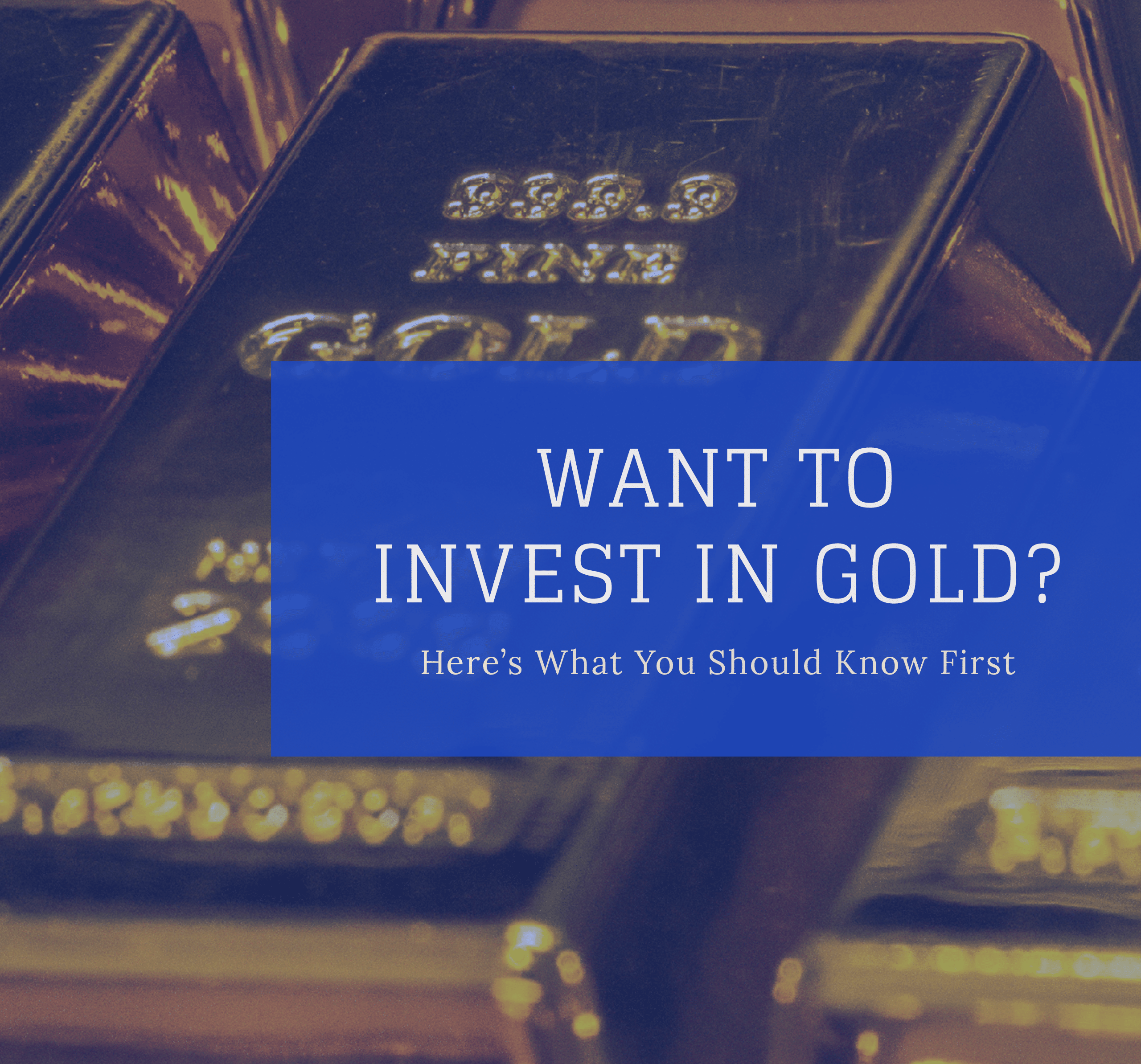Gold is shiny and makes nice jewelry, but it doesn’t impress me as an investment. Why? If you invest in gold, it doesn’t generate earnings or income, which means you can’t reliably value it. You can’t reasonably assign it an expected return and volatility either, which makes it’s difficult to include in a thoughtful asset allocation.
Yet increasing inflation expectations as well as the extraordinary levels of monetary and fiscal stimulus has recently boosted enthusiasm for the yellow metal.
If you’re wondering whether it makes sense to invest in gold for your portfolio, here are a few things to consider.
Gold It Doesn’t Offer Much of an Inflation Hedge
Gold is commonly thought of as a good store of value that hedges inflation, but that isn’t exactly true.
Since gold futures started trading in 1975, we’ve seen that gold prices tend to rise in anticipation of higher inflation. Once that inflation does (or doesn’t) materialize, the real returns for gold have historically been bad.
Today, gold prices are near previous real (inflation-adjusted) price peaks of January 1980 and August 2011. In the five years following these real price peaks, the price of gold fell 55% and 28%, respectively.
The implication is that today’s high real price of gold makes it an expensive inflation hedge. And that doesn’t even tell us if it’s a good hedge, regardless of the cost of holding it.
One way to determine gold’s effectiveness as a hedge to inflation is to measure the correlation.
Correlation measures the relationship of two or more variables. A correlation of 1.0 means that they move up and down perfectly in tandem. A correlation of -1.0 means they move in perfectly opposite directions. A correlation of 0.0 means there is no relationship.
If an investment is meant as a hedge against some factor, you want to see a correlation close to 1.0. But from 1970-2020, the spot price of gold had only a 0.11 correlation to inflation (as measured by the U.S. Consumer Price Index). That’s awfully low for something that’s supposed to be a hedge.
Even more, the price of gold is highly volatile, which is not ideal for hedging something that’s relatively stable. Using standard deviation to measure volatility from 1970-2020, gold prices had a standard deviation of 19.19% while inflation’s standard deviation was only 1.29%.
Gold Feels Like an Obvious Diversifier… But Does It Stand Up?
There are generally two reasons to evaluate whether you should invest in gold to add a new exposure to your portfolio:
- Enhance returns, or
- Improve diversification.
The case for gold enhancing returns is non-existent. Because gold has no earnings or income, it’s impossible to generate a reasonable expected rate of return to use for building an asset allocation.
Gold’s correlation to both stocks and bonds is nearly zero, potentially indicating it’s an obvious choice for improving diversification.
Unfortunately, low correlation alone is not sufficient to justify investing in gold and adding it to your portfolio. The outcome of bets on football games has no correlation with stock and bond returns either, but I’m sure most people would agree that sports gambling shouldn’t be part of your asset allocation.
For low correlation to mean more in your evaluation, it also needs to materially improve the overall volatility of a portfolio. Yet, each additional exposure you add to a portfolio in the name of diversification comes with a diminishing marginal benefit, which lowers the probability of net benefits from inclusion.
Generally a new exposure requires at least a 10% allocation to move the needle on a portfolio’s risk-adjusted returns, so you must carefully weigh the expected net benefits versus the degree of uncertainty.
Because I’m generally more concerned with implementing a bad idea than missing out on a good one (a preference for minimizing Type I error for all you quant geeks), I’m not a believer in gold as a diversifier.
Using Gold to Bet Against Paper Currencies
You can find concerns of governments bringing the financial system and the nation’s currency to ruin throughout the history of global financial markets.
U.S. investors should know that it’s extremely unlikely the U.S. dollar is on the verge of losing all worth or its reserve status.
It wasn’t long ago that people thought the euro might one day be a legitimate rival to the dollar, but the lack of common fiscal and monetary policy among participants makes that option seem unlikely.
The yen has made some slow steps towards globalization, but the Japanese government doesn’t want the yen to become an international currency.
And then there is China’s yuan, the more recently cited threat to the U.S. dollar as a reserve currency. It also happens to be the least viable candidate to destabilize our currency.
Just look at global settlements and investable assets available to foreign investors to see how far behind the yuan is compared to the dollar. According to SWIFT, a global transfer system, the Chinese currency accounts for less than 2% of global payments compared to the dollar’s 38%. Add in the fact that many of the Chinese currency deals are between Chinese companies and their Hong Kong subsidiaries, the yuan’s trade-settlement status is even weaker.
U.S. financial markets are broad, deep, and transparent. The same can be said for its economy. The fact of the matter is that there is currently no real substitute for the dollar as the global reserve currency.
The world is unpredictable, so we can’t entirely rule out the possibility of the dollar being dethroned at some point in the future. However, I’d argue a more likely scenario would be there is more than one reserve currency. And even if such a scenario were to come to fruition, it would take several decades to play out.
Using Gold as a Last-Ditch Effort to Protect Against Bad Events
Hopefully, this illustrates why gold probably is not a great asset for your investment portfolio. Despite rising enthusiasm, it simply doesn’t perform the functions you want a good investment to accomplish.
Still, there’s one more reason some investors may feel determined to buy gold: it’s the ultimate hedge against really bad events. Unfortunately, even this argument doesn’t hold up to reasonable scrutiny.
First of all, you would need to define what a “bad event” is, and make sure that it’s a scenario in which if you invest in gold, it would truly help you. Even if you do that, using gold to hedge against whatever this terrible future outcome might be sounds a lot like market timing.
We know market timing is bad, so there is a fundamental problem with this argument (even if your hypothetical bad event isn’t completely outlandish).
We never know when or why the next correction or bear market will happen.
What we do know is that market downturns happen on a regular basis. Rather than trying to predict the timing or cause of the next crisis, you’re better off planning on downturns occurring with a similar magnitude and frequency as they have in the past.
Investors must be willing to lose money on occasion – sometimes a lot of money – to earn the average long-term return that attracts most people to stocks in the first place. Volatility isn’t the enemy; it’s the cost of higher expected returns you earn in stocks versus bonds or cash.
Investing in gold (or any asset) for short-term, tactical purposes is the type of market timing and security selection that research conclusively shows is harmful to returns.
Investing in gold as a long-term diversifier has slightly more merit, but the degree of uncertainty regarding its benefits is very high given the modest potential improvement in risk-adjusted returns.
Plus, there is the behavioral aspect to consider when owning an asset that frequently loses on a relative or absolute basis – would you really be able to hold on for extended periods of underperformance over multiple decades?
While I can understand why some investors may feel interested in gold as a solution when inflation seems imminent and the world is experiencing unusual events (like emerging from a yearlong pandemic), the arguments for holding gold as a long-term investment simply don’t make sense for most people.
You, and your portfolio, would be better served by spending time reviewing the underlying assumptions in your financial plan. What is the average rate and standard deviation? What is the frequency and magnitude of downturns? What is the real (nominal minus inflation) return and volatility assumptions of the portfolio you are using to achieve your goals?
If you have a thoughtful financial plan and portfolio in place, it probably addresses the concerns that cause you to consider gold in the first place.
Ready to get your financial plan in place? Set up a quick 15-minute call with me.
…
RESOURCE: Do you want to make smart decisions with your money? Discover your biggest opportunities in just 9 questions with my Financial Wellness Assessment.















